Explore the Steps
Click on any bubble to explore the steps. Steps can be explored in any order as an iterative process, where information is revisited and improved through time as results of other steps become available.
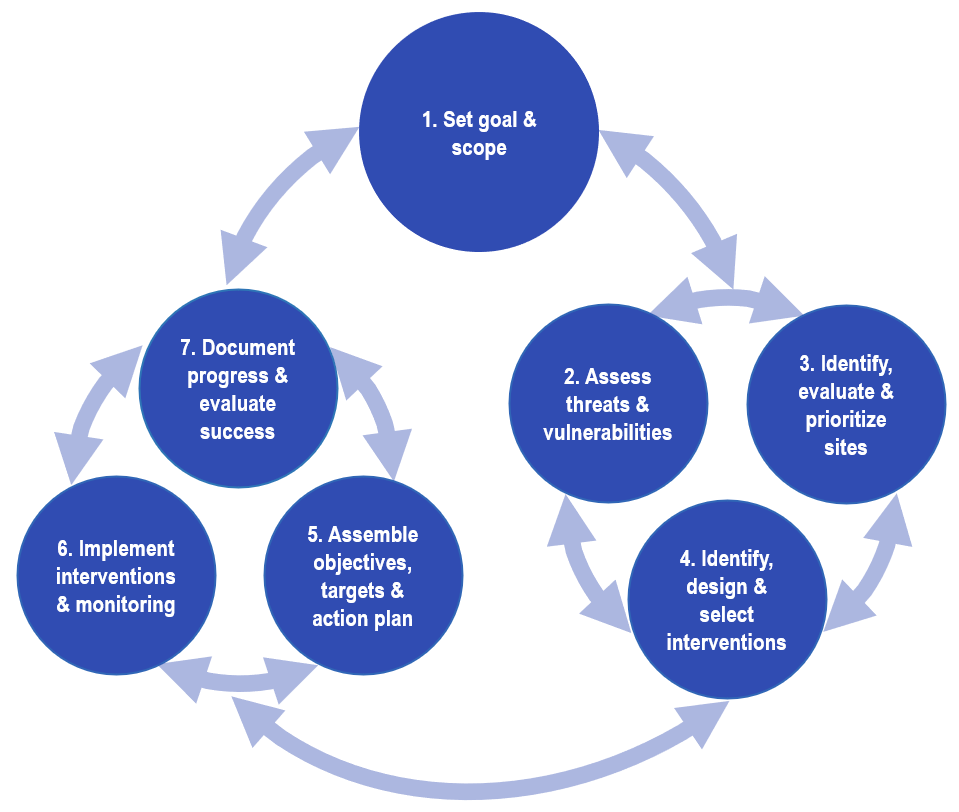

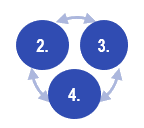

1. Set Goal & Scope
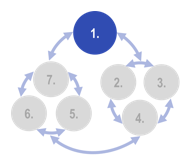
A clearly articulated goal is one that specifies the desired effect of a management effort in terms of what is to be achieved, and over what time frame (years to decades).
The scope of the effort refers to the extent of area (geographic boundaries) and/or framing of social parameters (such as human economic brackets or community types) on which the work will focus.
Click here to read examples from different ecosystems:
Related Concepts
- Setting goals begins considering existing conditions and potential threats to the target resource now and in the future, a process sometimes referred to as problem formulation.
- Baseline information, which refers to the current status and condition of the resource based on previous monitoring, informs problem formulation and serves as a minimum starting point for improvement.
2. Assess Threats & Vulnerabilities
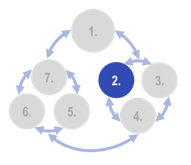
An early critical task is to assess threats to the natural resource of interest from local stressors, both natural and anthropogenic, and their interactions with large-scale climate change stressors.
The next stage is to assess vulnerabilities based on the degree of exposure to the threats plus the system's sensitivity and adaptive capacity to resist or recover.
Click here to read examples from different ecosystems:
Related Concepts
- Projections of future conditions with specified timeframes of change, particularly for climate change effects, are essential for characterizing the vulnerabilities of both today and tomorrow.
- Assessment must include characterizations of uncertainties that arise from the potential for measurement or modeling error, unexpected variations in natural systems, and unpredictable human behaviors that affect confidence levels in the results.
3. Identify, Evaluate & Prioritize Site(s)
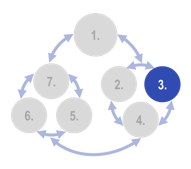
Within the defined geographic scope, it is necessary to identify site(s) that are smaller spatial units suitable in scale for implementing management projects or activities; in some cases, a single site may already be the focus.
The need to evaluate site(s) recognizes that sites can vary in their suitability for different interventions based on criteria such as relative contribution to the goal, current and future status of the resource, vulnerability, and management context.
Decision-making to prioritize (sites) for piloting and potential scaling-up of management activities to achieve the goal is based on review and discussion with appropriate management, experts, and other stakeholder groups.
Click here to read examples from different ecosystems:
Related Concepts
- Site status is characterized by factors such as resource condition (type/level/health), proximity to ecological thresholds (shifts), and anticipated vulnerability and resilience to future threats.
- The management context refers to existing management activities; social, political or regulatory constraints; stakeholder support and partnerships; and the existence of multiple benefits.
- Multiple benefits occur when a site or activity serves various goals, achieves numerous beneficial effects, provides multiple ecosystem services, or serves multiple stakeholder needs.
4. Identify, Design & Select Interventions

Proceeding to identify interventions involves brainstorming a full list of all available management actions that could be taken to address threats and vulnerabilities at sites selected as key to achieving the management goal.
Before making any choices, it is useful to assess how to design interventions by adapting components, configurations, timing, and other elements to ensure robustness under changing environmental conditions.
This makes it possible to select interventions based on evaluation criteria that include effectiveness under both current and future conditions, along with other key determinants such as cost, feasibility, urgency, flexibility, and multiple benefits.
Click here to read examples from different ecosystems:
Related Concepts
- Applying climate-smart considerations in intervention design accounts for climate-stressor interactions that could impact the effectiveness and lifespan of best management practices.
- Where multiple interventions are being contemplated for combined use at a site, information on sequencing requirements and potential interdependencies, synergies, or conflicts among interventions can be relevant to the evaluation and selection process.
5. Assemble Objectives, Targets & Action Plan

The transition from technical planning (steps 2-4) to practical implementation (steps 5-7) starts with the assembly of precise objectives that are Specific, Measurable, Achievable, Relevant, and Time-bound (SMART).
Such precision enables the creation of management targets that can function as stepping-stones along a path to achieving the objectives, by describing where and how each work element will be done under a defined implementation timeline.
The action plan then aggregates the full suite of interventions, objectives, targets, and timelines--tailored by site as appropriate--to guide the practical implementation of management activities to achieve the overall goal.
Click here to read examples from different ecosystems:
Related Concepts
- Paired with the action plan, an operational plan details economic and social factors needed to achieve successful implementation, such as funding, staffing capacity, risk assessment and response procedures, and exit strategy.
- A work plan details the short-term (e.g., annual) implementation schedule of specific tasks and responsible parties and lays out when and how each task will be accomplished.
6. Implement Interventions & Monitoring
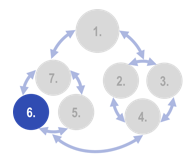
To implement interventions, the sequence and timeline of activities in the action plan are converted to practical application on the ground, through initial pilot trials (where needed) that are then scaled-up to fully achieve objectives.
Monitoring to assess the efficacy of interventions in the initial phase of implementation should be expanded into a more comprehensive monitoring plan that specifies metrics and methods, measures of effectiveness, spatial scale and locations, timeframe, and roles and responsibilities for collecting data at the full scale of the longer-term effort.
Click here to read examples from different ecosystems:
Related Concepts
- A pilot phase of preliminary testing may be warranted before fully scaling up interventions to validate and improve robustness and effectiveness in the face of uncertainties around climate change effects on stressors and system responses to interventions.
- Action planning fosters discussion of monitoring methods needed to track the implementation of interventions and measure success at achieving intended outcomes.
7. Document Progress & Evaluate Success
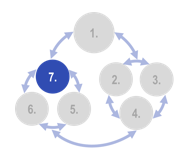
A key to assessing performance is to document progress by tracking the implementation team's practical completion of project installation and other intervention activities as specified in the action plan and associated work plan.
Analyses to evaluate success will involve comparing monitoring results (changes in metrics) to the objectives laid out in the action plan, where success is reflected by ecological changes that demonstrate concrete advancements toward, and eventual achievement of, the ultimate long-term goal.
Click here to read examples from different ecosystems:
Related Concepts
- Documenting progress is closely related to the broader concept of process evaluation, which examines implementation activities to determine how well a project followed the strategy laid out, and to distinguish if lack of expected results may have been due to poor implementation practices, such as unmet targets, versus incorrect theory.
- Evaluating success is analogous to outcome evaluation, which analyzes how well interventions' results are achieving desired outcomes in the shorter term (e.g., the persistence of a structure or reduction of a stressor) and longer term (e.g., detection of a desired ecosystem response or measure of improved ecosystem service).
